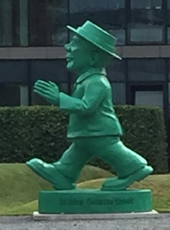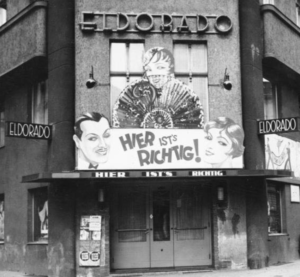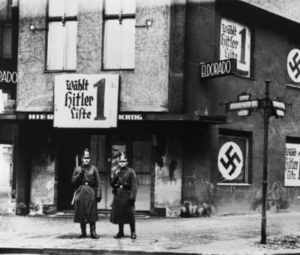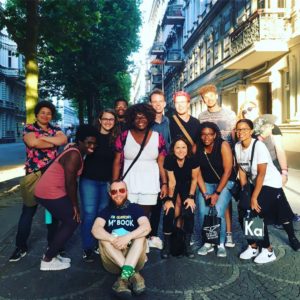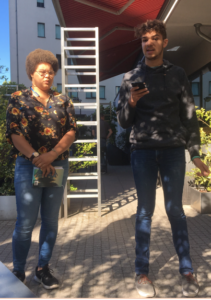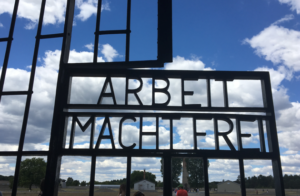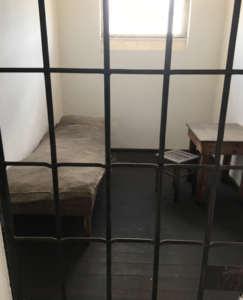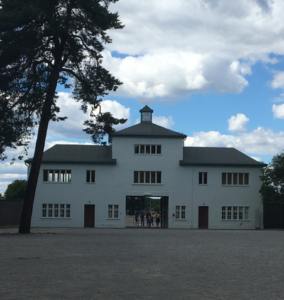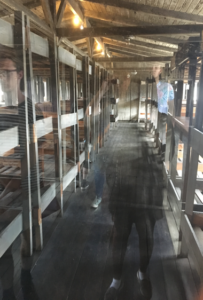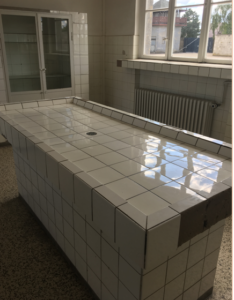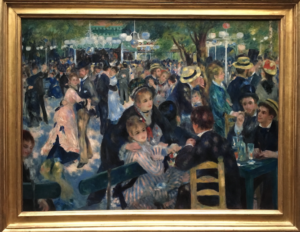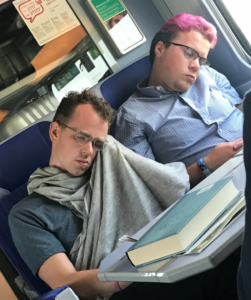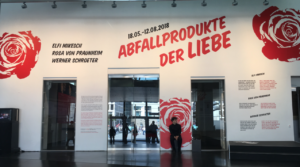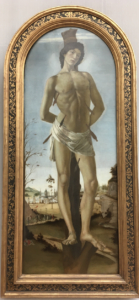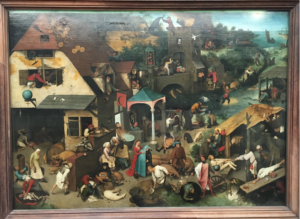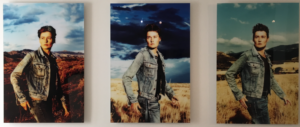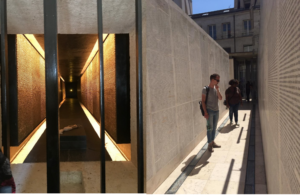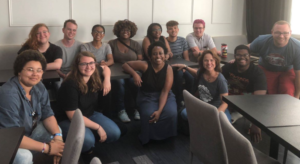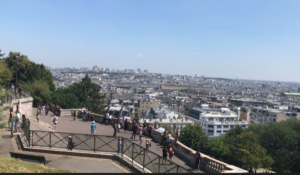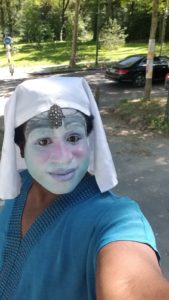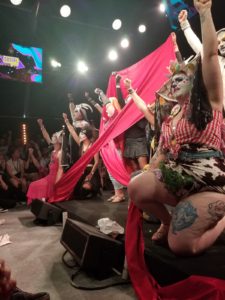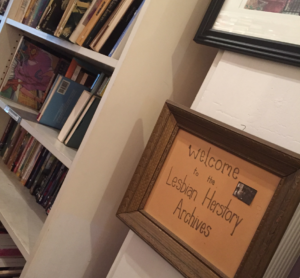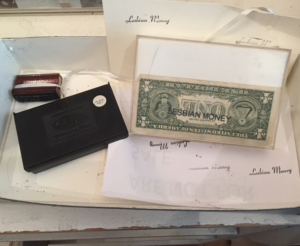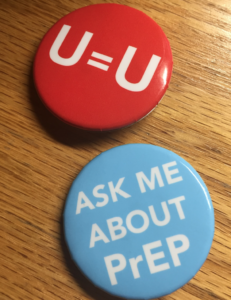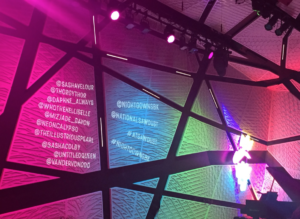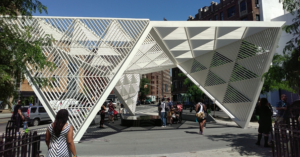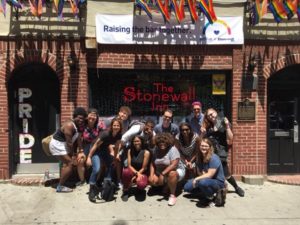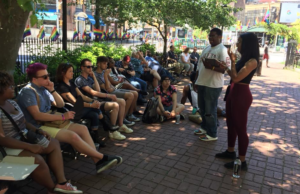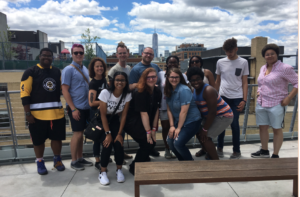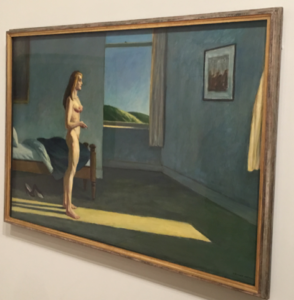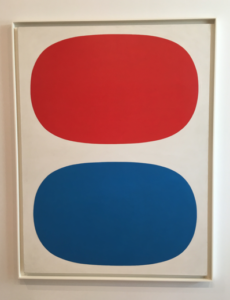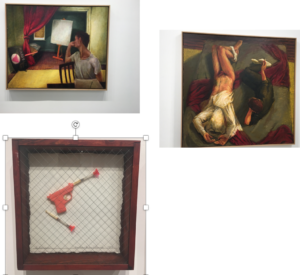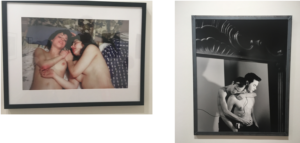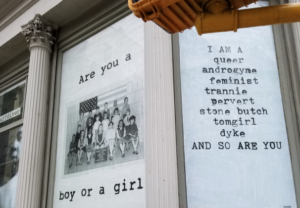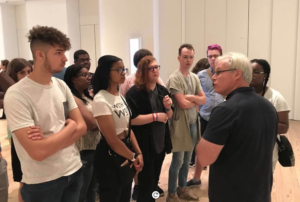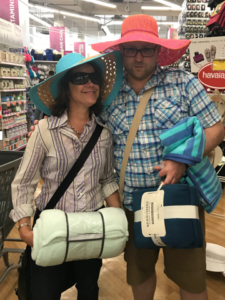A Trip to Remember By Breanna Johnson
Wednesday – July 4, 2018
After a full day of touring queer Berlin with our fantastic tour guide, Finn Ballard, we all had a free day to explore the city. Since we first arrived in Berlin I wanted to check out the Mall of Berlin, so I was determined to go and shop until I dropped. My roommate Nick Howard and I went together, mostly to get H&M clothing for cheaper prices, but also to see the size of the retail hub. To put it simply, the Mall of Berlin is massive. It houses over 300 stores and features two food courts, one in each building—yeah that’s right there’s an east and a west building. There are bridges outside that connect the two buildings together and in the common area on the first floor there is live music, seating, and pop-up shops offering sales and promotions.
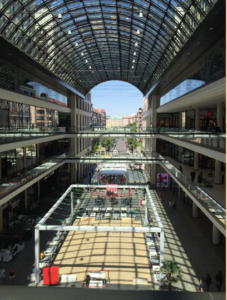
After shopping for three hours in the mall Nick and I took the subway back to Schöneberg to further explore the gayborhoods of Berlin. We walked around and stopped in a few shops for a few hours until we revisited a plaque dedicated to a brave German family. The Kolzer family’s plaque was recently put up—June 30th to be exact. The picture below explains the heroics of this courageous family.
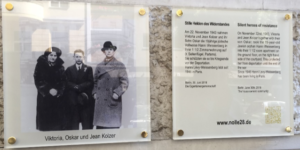
We then headed back to the subway station at Nollendorfplatz and on the way we came upon a memorial to the Homosexuals Persecuted under National Socialism. The memorial is not in a main area of the station and if you’re not looking carefully you can unknowingly walk right past it. I found this disappointing because this is a group of people from my community who were murdered and criminalized just for being themselves and they deserve a proper memorial.
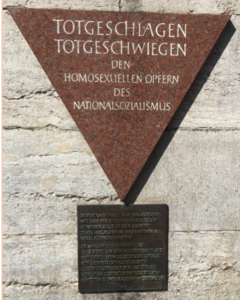
To end the night Nick, Crystal, and I went to an Italian restaurant around the corner from our hotel and enjoyed some fresh pasta—a thruple dinner, if you will. That’s the name the three of us have adopted for ourselves since we’ve done practically everything together on this trip since the first day. Then, we retired back to the hotel to prepare for the next day.
Thursday – July 5, 2018
We started off our last day in Berlin downstairs having a communal breakfast before doing some sightseeing. Memorials were our main focus for the day and the first one we visited was the Memorial to the Murdered Jews of Europe. This memorial was very somber and cold, evoking the atmosphere of a graveyard. The massive stones towered over the heads of our group as we wandered through the narrow pathways.

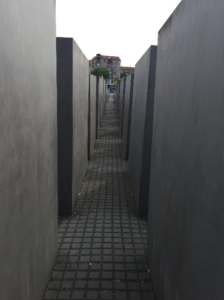
I felt an overwhelming heaviness as I walked through the memorial as well as a sense of disorientation because it was easy to get lost inside.
I was very disappointed in other groups that were there visiting the memorial. One group climbed atop the stones in an effort to take an ‘Insta-worthy’ photo; thankfully a maintenance worker yelled at them to get down. Even after that disrespectful action, more people attempted to climb the stones, and many continued to sit on them. I understand that this memorial is lacking signage and context, but the name alone should let you know that it is inappropriate to act that way.
The next memorial we saw was the Memorial to Homosexuals Persecuted Under Nazism. Before we even crossed the street, the disappointment set in because it is hidden behind trees, making it hard to find unless you are purposely looking for it. The plaque for the memorial is also hidden in some bushes and far from the memorial itself. The memorial is a giant stone with a window at the front that is only big enough for one person to access at a time.

Inside there is an underwhelming video of two same-sex couples kissing as the camera spins around them. In the background are historical photos of the persecuted homosexuals, but you can’t see them very well because of the couples kissing. The entire memorial could have and should have been done better.
After a debrief we headed to Brandenburg Gate, the staple of Berlin, to stop and get some souvenirs before heading to the last memorial site.
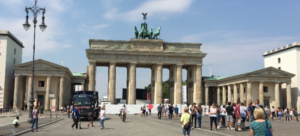
The final memorial was the Memorial to the Sinti and Roma of Europe Murdered Under National Socialism. Finally, a memorial done right! There was text to provide history and context, Ancient Sinti and Roma music playing, and an opening into a space specifically for this memorial. Inside, there was a circular reflection pool with a triangle in the middle.
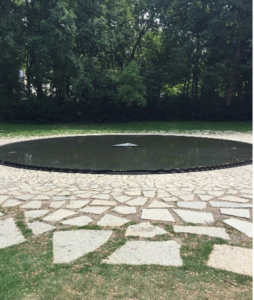
There were also stones on the ground with the names of Sinti and Roma towns, some which no longer exist today. You could tell there was a lot of thought put into this memorial. It was a proper memorial to the Sinti and Roma.
Our group then returned to the hotel to meet our guest speaker, Sascha Angermann. They spoke about their experiences being queer in Germany, their home country, and being an international student in the United States. They explained that they experienced more homophobia and xenophobia in the U.S. than in Germany. It was interesting to get their perspective; not to my surprise the United States has a lot of work to do to end the prominent homophobic culture.
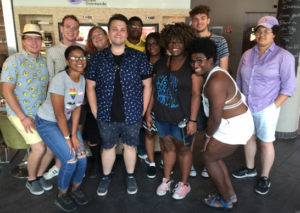
Friday – July 6, 2018
Our day is mostly taking place inside of airports since today is nothing but traveling. However, I think it also gives us a chance to reflect on this trip. We maneuvered through spaces despite language barriers, we critically analyzed queer works, and overall grew as students and people. This experience has been life-changing as it was my first time overseas. I fell in love with spaces and enjoyed getting to know my cohort, especially my thruple!

It is sad to know that our time on this adventure is over, but it’s not a good bye to international travel experiences; it’s a see you soon. On to the next adventure!
